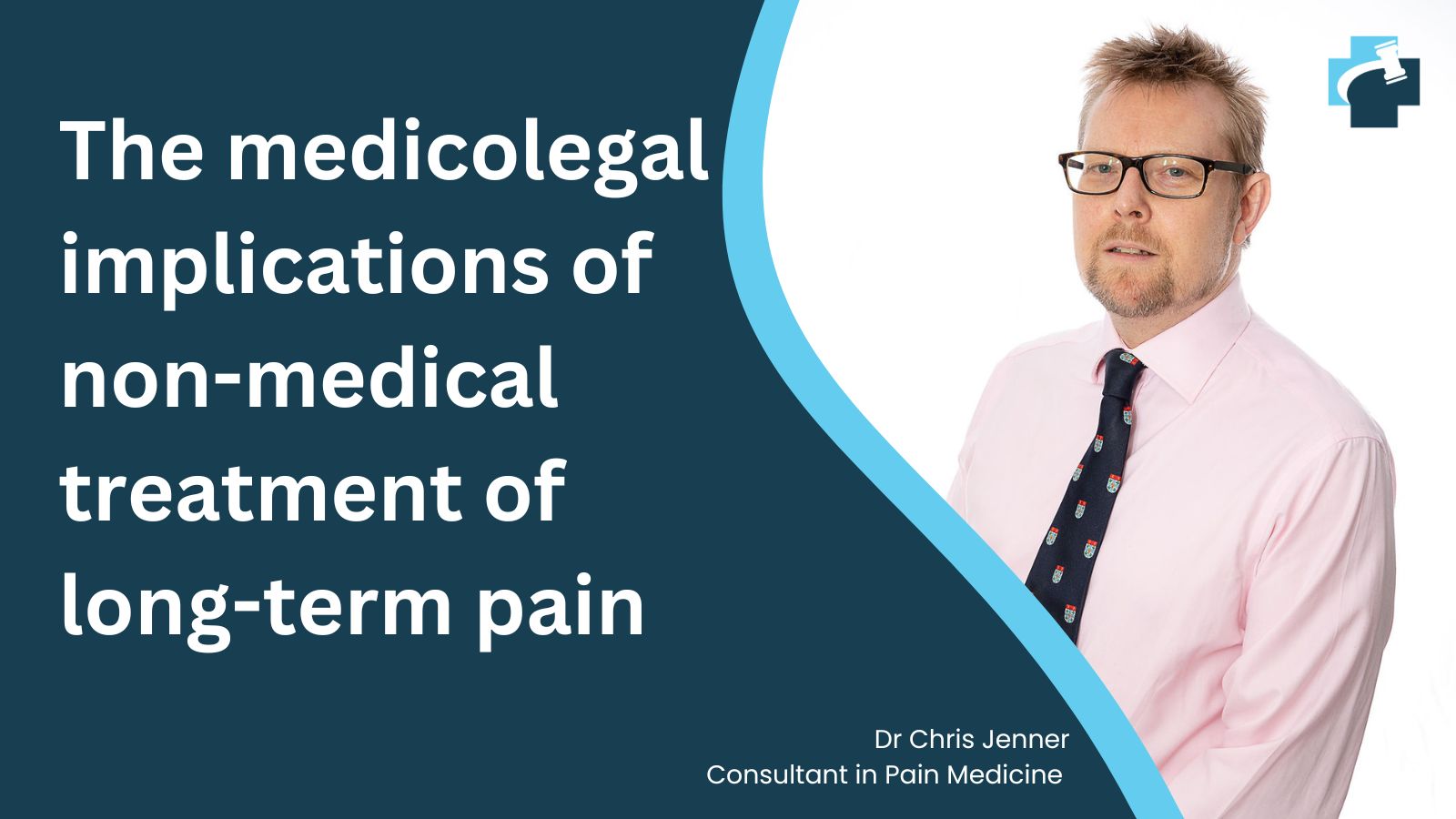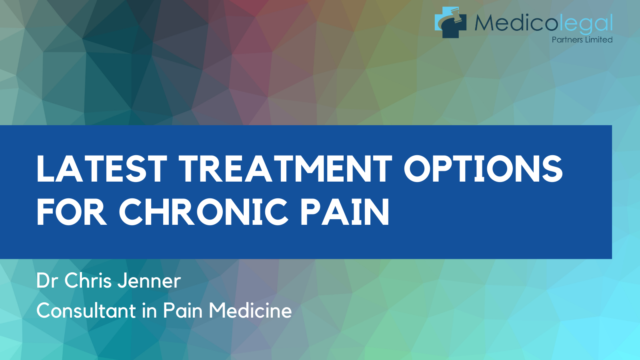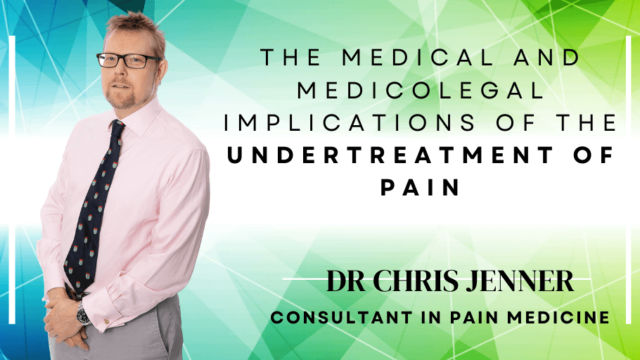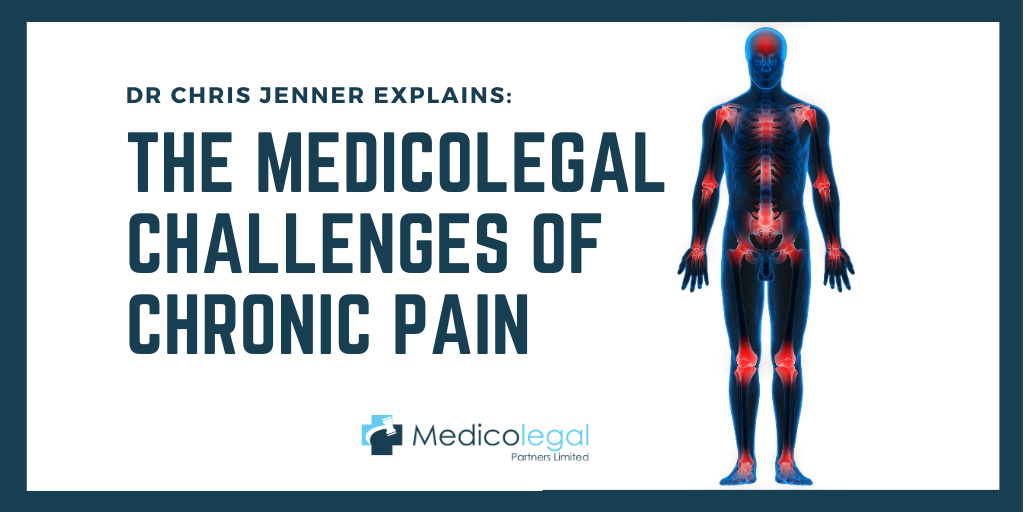The medicolegal implications of non-medical treatment of long-term pain

Chronic pain places a significant burden on patients and can affect every aspect of daily life. Due to the combination of physical and psychological aspects of pain, its management is complex and treatment approaches will vary according to the nature of the patient’s condition, and between individual patients with the same condition. Historically, most treatment programs relied on pharmacological interventions, but in recent years, various non-medical treatments have become available. Due in part to their reduced side effects, these now form the mainstay of chronic pain management. However, this gives rise to a number of medicolegal challenges.
There are many non-medical treatments available, including structured activity programs, psychological measures such as biofeedback, cognitive behavioural therapy (CBT) and hypnosis, and pain relief strategies such as transcutaneous electrical nerve stimulation (TENS). One of the most important aspects of any non-medical approach to pain management is keeping the patient active, as evidence shows that this improves both physical and mental health. However, for a patient with severe pain, movement can be a challenge. It is therefore important that patients are aware that pain does not always equal harm and that it is safe for them to carry out daily activities as far as they are able to. Psychological treatments take account of the anxiety and stress caused by chronic pain, and use techniques to reduce these. Sleep restoration strategies may also be helpful. Furthermore, increasing the patient’s understanding of their condition can help them to feel more in control of their situation.
In the wake of the opioid crisis, the value of non-medical interventions for chronic pain is being increasingly recognised. This goes hand-in-hand with the recent acceptance that pain is more than just a physical experience. Treatment should therefore start with a thorough examination and any obvious physical causes for the pain should be addressed. A treatment plan that encompasses physical, emotional and cognitive issues can then be formulated. Ideally, this should be overseen by a single healthcare professional, who coordinates the frequency and duration of the various modalities used. Overall, combined treatment approaches have consistently been associated with reduced pain and improved function, which often persist for several years. Over the longer term, this is not only good for the patient, but cost-effective for healthcare providers.
It is now almost universally agreed that patients should have access to adequate pain relief. Although pain management forms a basic element of medical ethical codes, in reality, pain is still often undertreated. Non-medical interventions offer an alternative treatment pathway and may help to achieve a good outcome for patients. However, one major issue with non-medical treatments is determining the efficacy of each modality. While the effectiveness of CBT is now established, and it is often viewed as a first-line therapy for chronic pain, robust evidence is lacking for many other treatments, particularly with regard to long-term effects. Therefore, it can be difficult to choose the most effective treatment for an individual patient and this can have a serious impact on the patient’s quality of life and ability to carry out daily tasks. Recent evidence has suggested that most non-medical approaches confer some benefit, at least in the short term. Interestingly, the biggest effects were seen on patient reports of mood and subjective symptoms, rather than pain duration, intensity or frequency. This suggests that the major benefits of psychological approaches to pain management may be due to the removal of the fear and anxiety surrounding the patient’s condition, rather than reduction of the pain itself.
A recent study suggested that non-medical approaches may sometimes be withheld from some patients, often in the belief that they are more severely affected and thus unlikely to benefit from such treatments. The research revealed that patients who are already involved in litigation, as well as those who can no longer work, are more likely to be denied non-medical interventions. However, studies have shown that while these patients may report worse pain overall, the benefits of non-medical interventions are comparable to those in patients who are not involved in litigation. Medicolegal issues can also arise when a patient feels that they should be offered pharmacological treatment, even if a non-medical approach is more appropriate. In order to avoid this scenario, patient expectations need to be carefully managed and good communication between doctor and patient is vital.
Chronic pain can be extremely challenging to manage and can severely restrict a patient’s daily activities and quality of life. Opioid therapy is rarely successful in treating chronic pain and may lead to unwanted complications and ensuing litigation. Often, the best patient outcomes are achieved by using a multidisciplinary approach that takes into account the individual patient and reflects the variation in symptoms seen for each specific diagnosis. A combination of pharmacological and non-medical treatment approaches is used, and the practitioners included in a multidisciplinary team may come from many specialties. However, evidence for the efficacy of many non-medical treatment options is lacking and doctors may be reluctant to suggest them. Therefore, further research and dissemination of results is required, along with additional education for healthcare professionals.
Further reading:
Hobelmann, J. G., & Huhn, A. S. (2021). Comprehensive pain management as a frontline treatment to address the opioid crisis. Brain and Behavior, 11(11), e2369. https://doi.org/10.1002/brb3.2369
Malone, M. D., & Strube, M. J. (1988). Meta-analysis of non-medical treatments for chronic pain. Pain, 34(3), 231–244. https://doi.org/10.1016/0304-3959(88)90118-2




